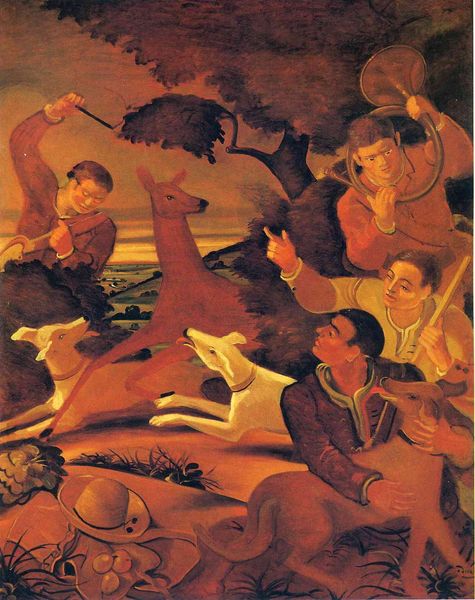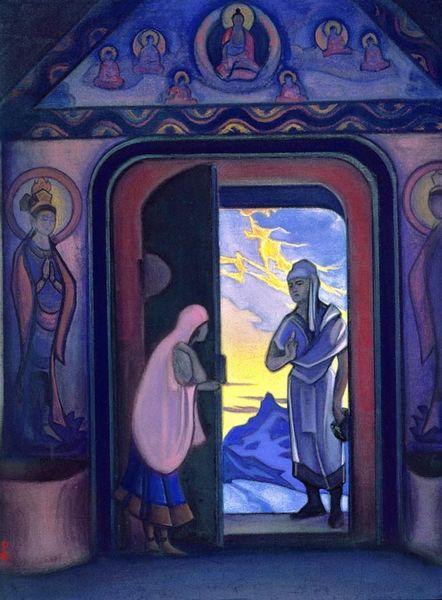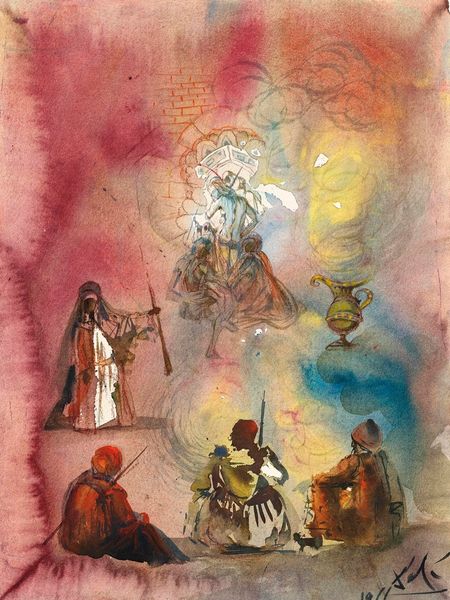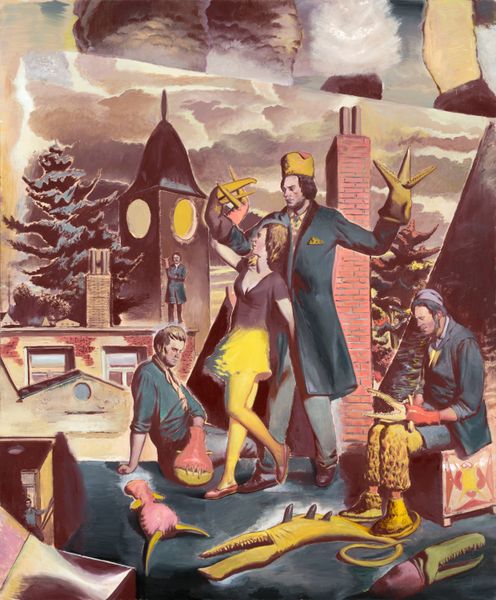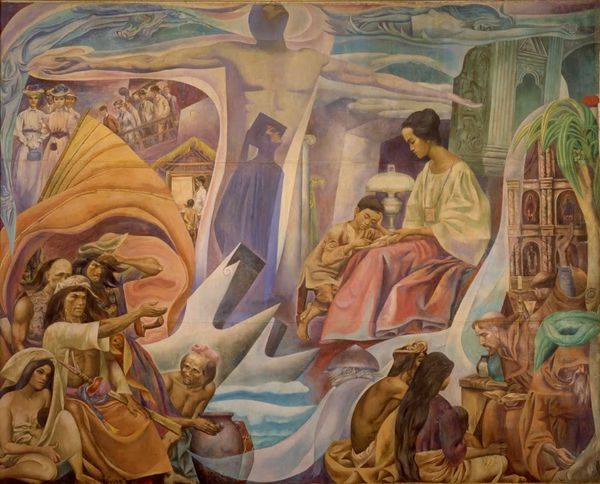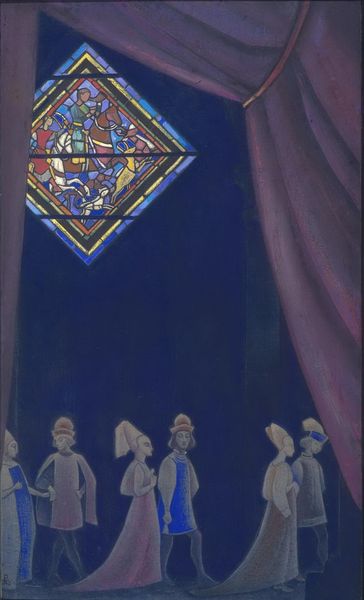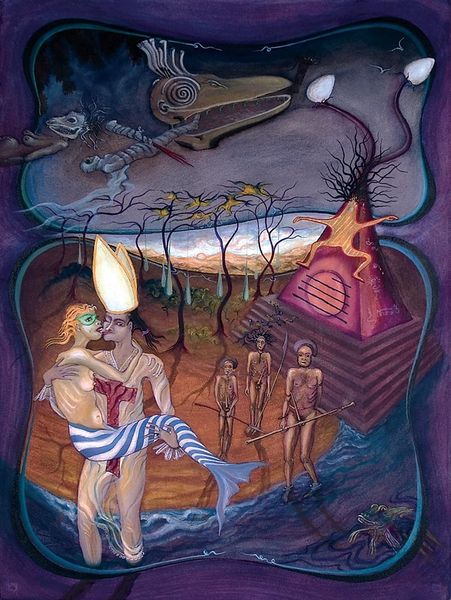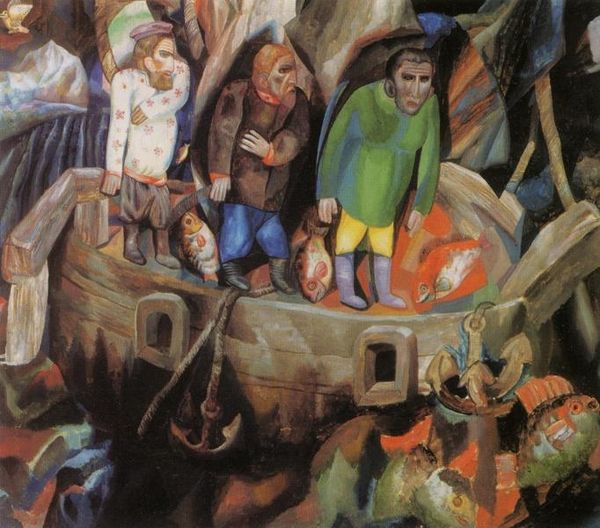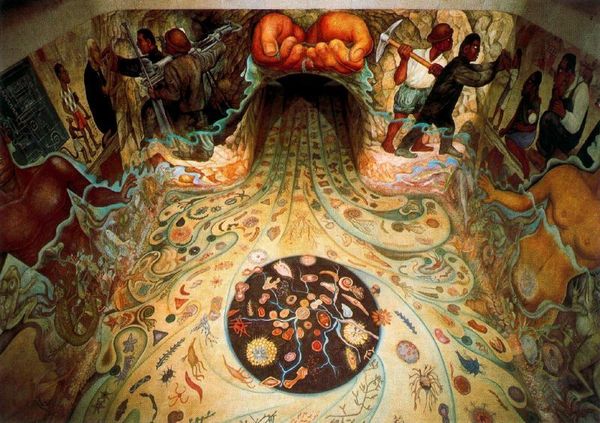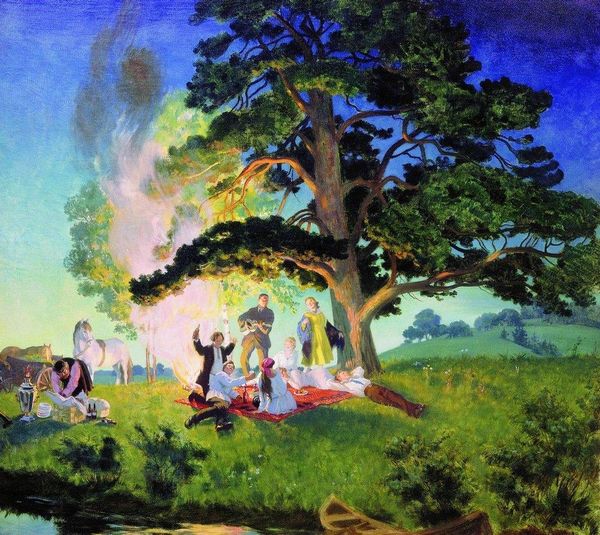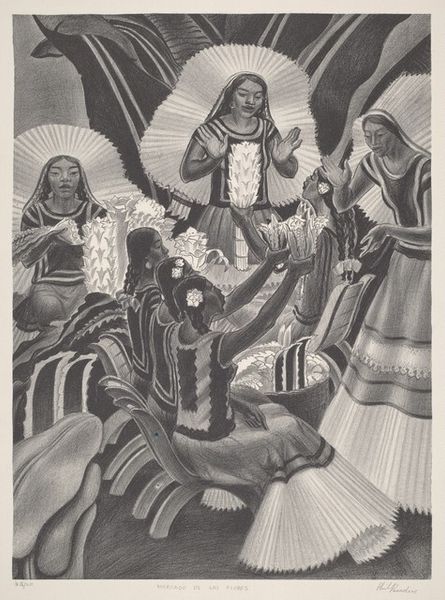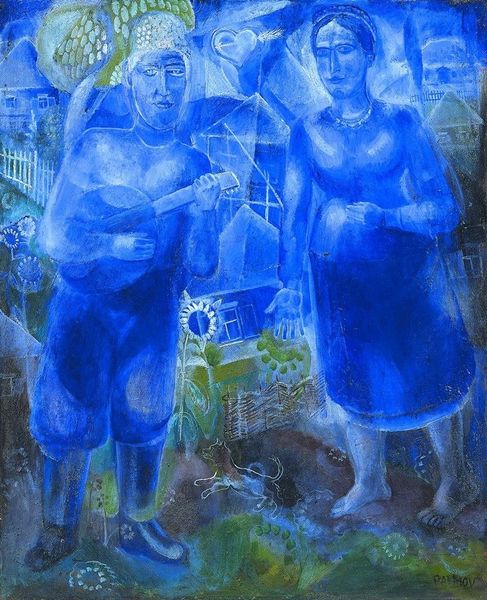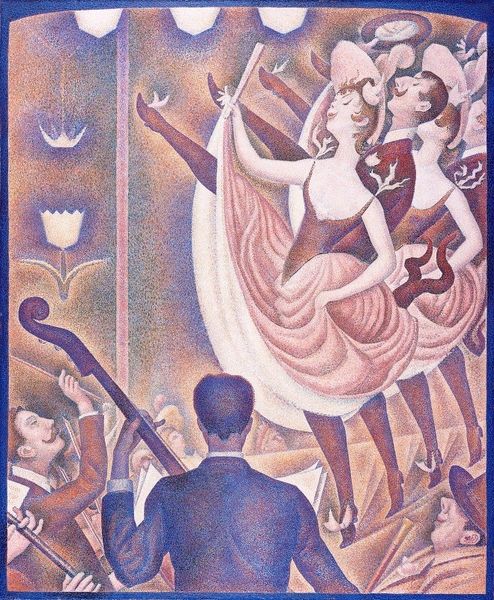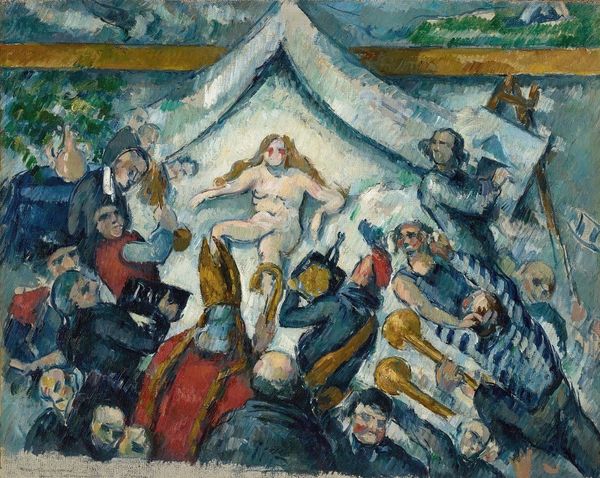
painting, oil-paint
#
portrait
#
abstract expressionism
#
narrative-art
#
painting
#
oil-paint
#
figuration
#
neo expressionist
#
expressionism
#
portrait art
#
expressionist
Copyright: Kmetty János,Fair Use
Curator: Kmetty János’s “Sermon on the Mount," created in 1918, is rendered in oil paint with visible brushstrokes, offering a very particular perspective on the iconic biblical scene. Editor: It's… surprisingly blue. And rather angular. The figures feel carved, almost, not really capturing any of the tenderness I associate with this scene. Instead, the heavy outlines draw the eye immediately to the sharp construction of forms and their stark arrangements. Curator: Well, look at the historical moment; 1918 was a year of intense upheaval. The expressionistic style amplifies the collective anxiety felt during the final stages of the First World War, and post-war social anxieties that permeated János' immediate social surroundings at the time, perhaps echoing the need for spiritual guidance amidst societal turmoil. Editor: That raw energy is undeniable. And yet, the layering of paint, the very substance of it, provides a sort of grounding presence. You see how he manipulates the impasto in the sky to mimic swirling clouds—it speaks to the laborious act of making something tangible from intangible emotions, don't you think? Curator: Precisely. The figures are also intentionally flattened, stripped of individual identity. The universal blue palette and stiff poses contribute to a feeling of shared, collective experience. It invites contemplation on class disparities and social status, perhaps suggesting a leveling effect achieved through shared suffering and collective longing for change in the social status. Editor: The making becomes a metaphor, then. Applying the materiality of paint in this fashion, János reminds us of the real work required for social change and spiritual awakening. Not just whispers of morality, but the gritty, demanding task of re-shaping reality, much like how we handle material. Curator: Right. And placing this event – the Sermon on the Mount - at such a critical juncture hints to a profound appeal for ethical transformation at a societal scale. It becomes less about passive spectatorship and more about actively constructing a more just reality. Editor: Exactly. It's about how these ordinary materials—paint, canvas, hope, and maybe faith—combine with deliberate human actions that change something monumental. I won’t view expressionist use of materials in the same way again. Curator: Indeed. Thank you, our material engagement allowed to uncover the nuanced layers within, offering, potentially, a re-evaluated perspective on a very canonical narrative.
Comments
No comments
Be the first to comment and join the conversation on the ultimate creative platform.
